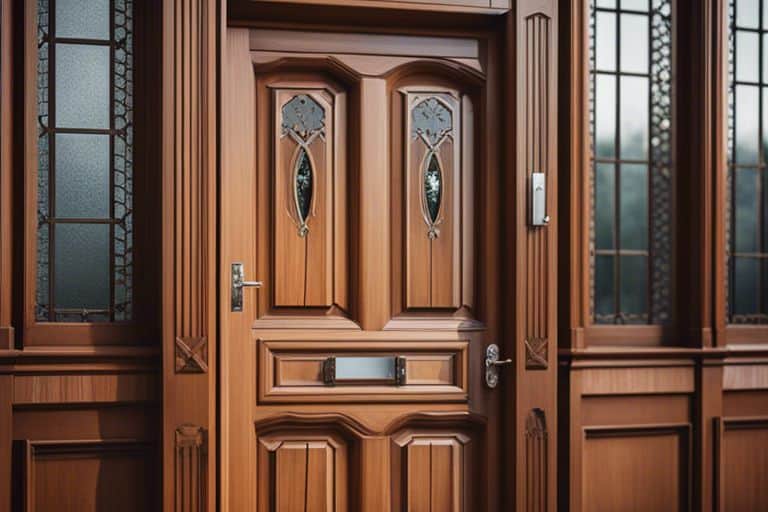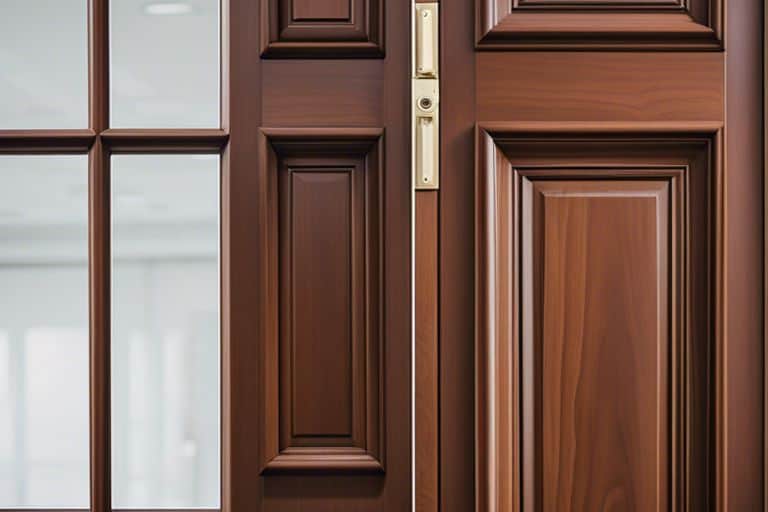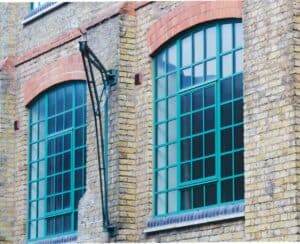Regarding wooden doors and windows, ensuring they are properly treated before painting is crucial to protecting them from the elements and extending their lifespan. You may be wondering why this step is necessary, and that’s what we’re here to explain. By treating the wood, you prevent issues such as rot, decay, and termite infestation, ensuring your doors and windows remain in top condition for years to come. If you’re unsure about how to prepare your wooden surfaces for painting, make sure to check out this helpful resource on How should I prepare doors and windows for painting?.
Key Takeaways:
- Protective Benefits: Wood impregnation/treatment helps protect wooden surfaces from rot, decay, insects, and moisture damage, extending their lifespan.
- Types of Solutions: Different impregnation solutions include oil-based, water-based, and pressure-treated options, each offering unique advantages for specific wood types and environments.
- Application Methods: Impregnation can be carried out through spraying, brushing, or soaking, ensuring thorough coverage and penetration into the wood for maximum protection and enhanced appearance.
These treatments are important for maintaining the integrity and aesthetics of wooden surfaces, ensuring they remain durable and visually appealing for years to come.

The Basics of Wood Treatment
The How to Protect and Maintain Exterior Wooden Doors article that you’ve read provided valuable insights into maintaining wooden surfaces. Now, let’s dive deeper into the importance of treating wood before painting to ensure the longevity and aesthetic appeal of your wooden doors and windows.
Reasons for Treating Wood
While wooden doors and windows add warmth and character to a home, they are vulnerable to various elements that can cause deterioration over time. Wood treatment is necessary to protect these surfaces from rot, pests, moisture, UV rays, and general wear and tear. By impregnating or treating wood before painting, you create a barrier that extends the lifespan of the wood and enhances its appearance.
Different Types of Wood Treatments
One of the key considerations when treating wood is the type of treatment solution to use. There are several options available, each with its unique benefits and application methods. Wood preservatives, water repellents, and wood oils are commonly used for treating wooden surfaces. Wood preservatives provide protection against rot and decay, while water repellents prevent moisture damage. Wood oils enhance the natural beauty of the wood and provide a protective layer against the elements. Any treatment should be applied in accordance with the manufacturer’s instructions.
| Wood Treatment Type | Benefits |
| Wood Preservatives | Protection against rot and decay |
| Water Repellents | Prevention of moisture damage |
| Wood Oils | Enhancement of natural beauty and protection |
| Other Treatments | Varied benefits based on specific product |
| Any type | Should be applied as per manufacturer’s instructions for best results |
Reasons for treating wooden doors and windows before painting are numerous, ranging from protecting against moisture and UV rays to preventing decay and extending their lifespan. It is necessary to choose the right type of treatment based on the specific needs of your wooden surfaces. By investing in proper wood treatment, you not only enhance the durability of your doors and windows but also preserve their aesthetic appeal for years to come.

Pre-Treatment Tips for Optimal Results
Despite the natural durability of wood, treatment before painting is necessary to protect your wooden doors and windows from the harsh elements they face. To ensure a successful treatment process, follow these important pre-treatment tips:
Assessing Your Wooden Surfaces
While inspecting your wooden surfaces, look for signs of damage such as cracks, rot, mould, or decay. These issues should be addressed before treatment to prevent further damage and ensure the effectiveness of the treatment solution. Any untreated damage can compromise the longevity of your wooden doors and windows.
Cleaning and Preparing Wood for Treatment
If dirt, grime, or old paint layers are present on your wooden surfaces, it is crucial to clean and prepare the wood before treatment. Using a chemical remover or power washer can help strip away old paint layers and debris, allowing the treatment solution to penetrate the wood more effectively.
Preparing your wooden surfaces properly before treatment is key to achieving optimal results and extending the lifespan of your doors and windows.
Choosing the Right Wood Treatment Solution
For those looking to protect and enhance the longevity of their wooden doors and windows, selecting the right wood treatment solution is crucial. Unlike seeking guidance from forums like Help on exterior wood door – Paint Talk, understanding the factors involved in choosing the appropriate treatment can make a significant difference in the outcome.
Factors to Consider When Selecting Treatments
- Climate
- Type of wood
- Application ease
- Maintenance requirements
Recognizing these factors will help in determining the most suitable treatment for your wooden surfaces.
Pros and Cons of Different Treatment Solutions
| Pros | Cons |
| Offers excellent protection | May require frequent reapplication |
| Enhances the natural beauty of wood | Can be more costly upfront |
You should thoroughly weigh the benefits and drawbacks of various treatment solutions to make an informed decision. Taking into account the requirements of your specific wooden doors and windows will help ensure the best possible outcome for your treated surfaces. Our experts at Express Windows Group can provide further guidance on choosing the right treatment solution for your needs.
Step-by-Step Guide to Treating Wood
Equipment and Materials Needed
| Equipment | Materials |
| Little Giant Ladder | Wood Impregnation Solution |
| Paintbrush or Roller | Protective Gloves |
| Sandpaper | Masking Tape |
| Dust Mask | Clean Cloth |
Detailed Application Process
To begin the treatment process, ensure the wooden surface is clean and dry before applying the wood impregnation solution. Wear protective gloves and a dust mask to prevent any contact with the chemicals. Start by applying the solution with a brush or roller evenly across the surface, following the manufacturer’s instructions for the application method and drying times.
To ensure maximum protection, apply multiple coats of the impregnation solution allowing each layer to dry completely before adding the next. Once the wooden surface is thoroughly treated, allow it to cure for the recommended time before proceeding to the painting process to enhance its appearance and extend its lifespan.
Procession, wood impregnation/treatment is vital in protecting wooden surfaces from moisture, rot, and pests. By sealing the wood fibres and creating a barrier against external elements, this step not only ensures the longevity of your wooden windows and doors but also adds an extra layer of protection to maintain their aesthetic appeal.
Tips for Treating Different Types of Wooden Surfaces
Keep Wood well-maintained and protected with the right treatment methods. Different types of wooden surfaces require specific approaches to achieve optimal results. Here are some tips for treating various wooden surfaces effectively:
| Treatments for Hardwoods vs. Softwoods | |
|
Even though both hardwoods and softwoods can benefit from treatments, the methods may vary. Hardwoods are typically denser and may require more thorough penetration of the treatment solution. On the other hand, softwoods are more porous and may need multiple coats for adequate protection. |
When treating hardwoods, consider using a wood preservative with higher levels of active ingredients to ensure deep penetration. For softwoods, a sealant or varnish with UV protection can help prevent damage from sunlight exposure. |
| Special Consideration for Doors and Windows | |
|
Assuming you’ve chosen the right treatment products, pay special attention to wooden doors and windows as they are exposed to various environmental elements. Properly treating these surfaces can significantly extend their lifespan and enhance their appearance. |
To protect doors and windows from moisture and rot, consider using a waterproofing sealant or paint with added weather-resistant properties. Regular maintenance is important to ensure continued protection. |
Any surface left untreated, especially when facing harsh conditions, risks deterioration and reduced longevity. Make sure to choose suitable treatments based on the type of wood and the intended use of the wooden surfaces. Experiment with different products to find the most effective solution for long-term protection.

Maintenance and Care Post-Treatment
Routine Inspection and Touch-Ups
An crucial aspect of maintaining the efficacy of wood treatment is routine inspection and prompt touch-ups. With the passage of time and exposure to various elements, wooden surfaces may develop minor wear and tear. Regular inspections allow you to identify and address these issues before they escalate and compromise the treatment’s effectiveness.
Recommendations for Long-Term Treatment Effectiveness
Routine care and maintenance are key to prolonging the lifespan of your wooden windows and doors. Implementing a schedule for reapplication of wood treatment solutions at recommended intervals can further enhance the durability and appearance of these surfaces.
Inspection: Be vigilant for any signs of damage or deterioration, such as cracks, peeling, or discolouration. Address these issues promptly to maintain the protective layer and preserve the integrity of the wood beneath.
Summing up
With these considerations in mind, it is imperative to treat wood before painting to protect your wooden doors and windows. The process of impregnation or treatment offers numerous benefits including increased durability, resistance to moisture, and enhanced aesthetics. By choosing the right impregnation solution and applying it correctly, you can extend the lifespan of your wooden surfaces and ensure they remain looking their best for years to come.
This service is provided by us, Express Windows Group, for all our wooden windows and doors. Our expertise in wood impregnation and treatment ensures that your wooden surfaces are well-protected and maintain their beauty for years to come. Trust us to protect your investment and enhance the appearance of your home with our high-quality impregnation solutions and application methods.
FAQ
Q: Why is it important to treat wood before painting?
A: Treating wood before painting helps protect it from moisture, rot, and insects, extending its lifespan and ensuring better paint adhesion.
Q: What are the benefits of treating wood before painting?
A: Treating wood helps prevent warping, cracking, and decay, resulting in a longer-lasting and better-looking finish.
Q: What types of wood treatment solutions are available?
A: There are various options including wood preservatives, sealants, and primers that can be applied to wood surfaces before painting.
Q: How do wood impregnation solutions work?
A: Wood impregnation solutions penetrate the wood fibres, providing protection from moisture, UV rays, and other environmental factors that can damage the wood.
Q: What is the best method for applying wood treatment solutions?
A: The best method depends on the type of solution being used, but common application methods include brushing, spraying, or dipping the wood in the treatment solution.
Q: How often should wood be treated before painting?
A: It is recommended to treat wood surfaces before painting whenever they are exposed to the elements or show signs of wear to maintain their longevity and appearance.
Q: What are the consequences of not treating wood before painting?
A: Failing to treat wood before painting can lead to premature deterioration, requiring more frequent repainting and potentially costly repairs or replacements.













